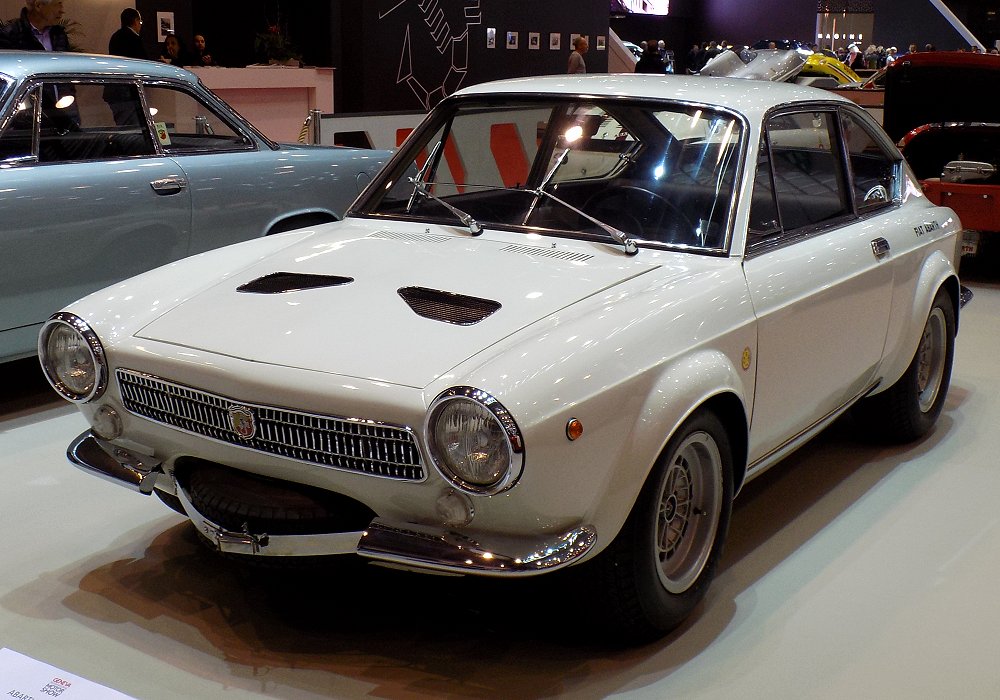In February 1966, Turin witnessed the unveiling of what would become one of the most extraordinary chapters in Italian automotive history. The Abarth OT 2000 America Coupé emerged as a testament to Carlo Abarth’s uncompromising vision of performance. With its debut, this hand-crafted masterpiece earned the nickname “wahres Monster” — not for its size, but for the formidable power lurking beneath its elegant shell.
Just four examples of this automotive gem left the Turin workshop, each representing the pinnacle of 1960s engineering prowess. The marriage of a potent 2-liter powerplant with a featherweight body created a power-to-weight ratio that would impress even by today’s standards. This wasn’t just another sports car; it was Abarth’s bold statement to the world.
Raw Power in a Compact Package
The heart of this Italian thoroughbred beats with remarkable intensity. The rear-mounted, longitudinally-positioned 2-liter engine produces a stunning 187.6 horsepower at 7,200 rpm — numbers that raised eyebrows in 1966 and still command respect today. This powerplant didn’t just set benchmarks; it redefined what was possible in a compact sports car.
The engineering team achieved this remarkable output through meticulous attention to detail. With a bore of 88.0 mm and a stroke of 80.0 mm, the engine strikes an optimal balance between power delivery and reliability. The naturally aspirated four-cylinder arrangement proves that sometimes the simplest solutions yield the most impressive results.
“The OT 2000’s engine is a masterclass in naturally aspirated performance. The power delivery is absolutely linear, and the sound — pure mechanical symphony. We rarely see this level of engineering excellence in modern cars.” — Marcus Helmuth, Classic Car Restoration Specialist
The sophisticated liquid cooling system ensures optimal temperature management, while the engine’s placement contributes to near-perfect weight distribution. This mechanical harmony translates into exceptional handling characteristics that set new standards for the era.
Fact!
The OT 2000 America Coupé weighs just 710 kg — lighter than many modern motorcycles. This incredible weight figure, combined with its 187.6 hp output, results in a power-to-weight ratio that would embarrass many contemporary sports cars.
Design Excellence
At just 3,660 mm in length, the OT 2000 America Coupé exemplifies the “small but mighty” philosophy. Its compact dimensions house a perfectly proportioned 2+2 configuration, though some special versions were built as pure two-seaters for enhanced performance and reduced weight.
The fixed-head coupé body style features clean lines that cut through the air with minimal resistance. Every panel serves a purpose, every curve contributes to its aerodynamic efficiency. The design team created a shape that not only performs exceptionally but stands as a timeless example of 1960s Italian automotive artistry.
Historical Reference!
The S1 variant, with its slightly longer 3,830 mm body and reduced 655 kg weight, represents an even more focused interpretation of the OT 2000 concept. These minor variations showcase Abarth's commitment to continuous improvement and optimization.
The interior embraces minimalist elegance, focusing on the essentials of performance driving. Every control falls naturally to hand, every gauge provides vital information at a glance. This is functional design at its finest.
Competition Heritage
The OT 2000 America Coupé wasn’t just built for show — it was engineered for competition. With 206 Nm of torque complementing its impressive horsepower, this Abarth demonstrates remarkable versatility across various racing conditions.
“When you pilot an OT 2000, you’re not just driving a car; you’re conducting an orchestra of mechanical precision. The balance, the response, the sheer capability — it’s unlike anything else from its era.” — Jean-Pierre Lemont, Vintage Racing Driver
Later versions pushed the envelope even further, with power output reaching 208 horsepower. These developments cemented the model’s reputation as a serious competitor on both European and North American circuits.
Enduring Legacy
Few cars capture the essence of 1960s Italian performance engineering like the OT 2000 America Coupé. Its appearances at prestigious events like the Geneva International Motor Show and Rétromobile 2018 underscore its historical significance and collector appeal.
The car’s rarity — with only four special Expo Speciale versions produced — has elevated it to legendary status among automotive enthusiasts. Each surviving example tells a story of innovation, craftsmanship, and the relentless pursuit of performance excellence.
Today, these vehicles stand as rolling testimonials to Abarth’s golden age. Their value continues to appreciate, not just in monetary terms, but in their contribution to automotive history and design.
Important!
The OT 2000 America Coupé's influence extends beyond its production numbers. Its engineering solutions and performance benchmarks influenced sports car development well into the 1970s.
The Final Verdict
The Abarth OT 2000 America Coupé represents more than just another 1960s sports car. It embodies the perfect storm of Italian design flair, engineering excellence, and racing pedigree. Its limited production run ensures its place among the most sought-after classic vehicles.
While modern sports cars may surpass its raw performance figures, few can match its character, exclusivity, and historical significance. The OT 2000 America Coupé remains a benchmark for what’s possible when engineering genius meets artistic vision.
| Pros | Cons |
|---|---|
| Exceptional power-to-weight ratio making it a performance powerhouse | Extremely limited production makes finding one nearly impossible |
| Advanced engineering solutions that were ahead of their time | Maintenance requires specialized knowledge and rare parts |
| Perfect balance due to rear-engine layout | Limited interior space compared to contemporary GT cars |
| Timeless design that still turns heads | High restoration costs due to unique components |
| Historically significant as one of Abarth’s finest creations | Limited documentation makes authentic restoration challenging |
| Strong investment potential due to rarity | Requires careful handling due to rear-weight bias |
| Racing pedigree and proven competition capability | Original spare parts are virtually non-existent |

